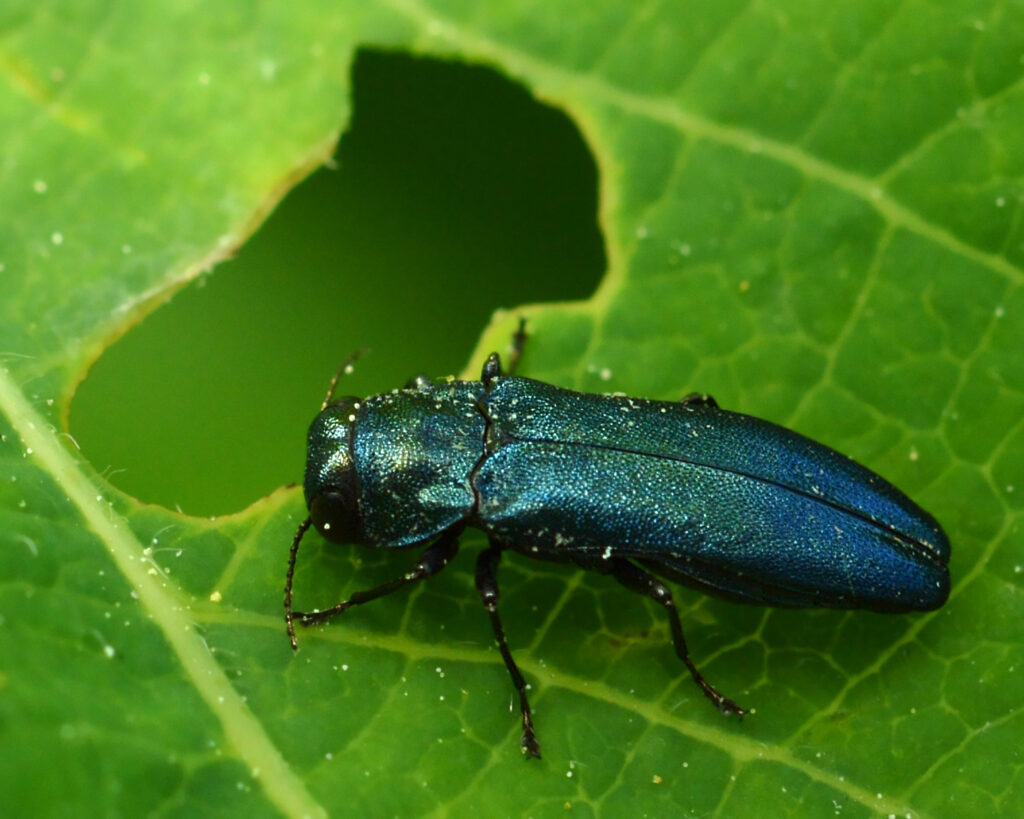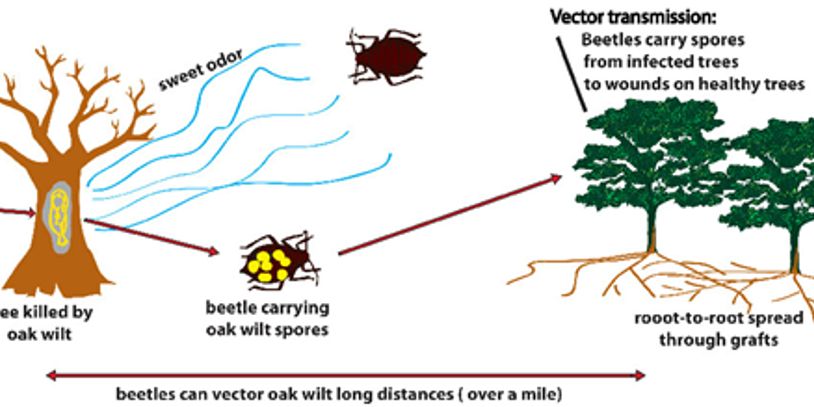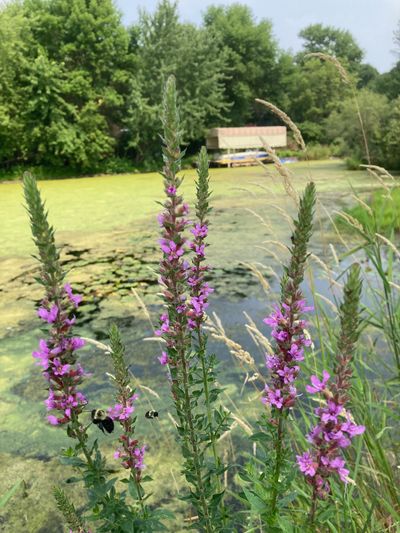What is an Invasive Species?
Invasive Species may be plants or animals that are not native to Minnesota, didn’t exist here pre-settlement, and can spread easily and exponentially – interfering with natural habitats, fisheries or recreation.
Please also see:
- Aquatic Invasive Species (AIS)
- Aquatic Invasive Plants (Curly-leaf Pondweed, Eurasian Watermilfoil)
- Aquatic Invasive Animals (Golden Clam, Zebra Mussels, Carp)
Emerald Ash Borer
Emerald Ash Borer (EAB) is an insect that has killed millions of ash trees since 2002. Minnesota currently has the largest ash tree population in the United States.
Woodpeckers readily peck at ash trees for larvae that feed beneath the bark, therefore they may indicate that the insect is present.
The Minnesota Dept. of Agriculture has placed a quarantine on certain areas of the state. You may not move ash logs, waste, chips/mulch and firewood without a certificate from MDA. Click here for map.

Photo by Ryan Hodnett
https://creativecommons.org/licenses/by-sa/4.0/deed.en
Early detection is critical to minimizing tree loss and their environmental benefits.
Please see the DNR’s webpage for more information: https://www.dnr.state.mn.us/invasives/terrestrialanimals/eab/index.html
Oak Wilt

Oak wilt is a non-native, invasive fungal disease that kills all species of oak in Minnesota. It spreads in two ways: above ground by sap-feeding beetles and below ground through connected roots.
Do not to prune oaks from April through July. By avoiding pruning or cutting oaks in spring and early summer, people prevent fungus spread by sap beetles carrying spores from infected trees to fresh cuts. Instead, winter is a good time to trim dead oak branches and remove them.
While all species of oak can be affected, red oaks (pointed lobes on their leaves) are by far the most susceptible and are probably the most abundant tree in our yards. Northern red and pin oaks can die within two to three months of infection. White oaks are the most resistant and may survive for years after infection. Burr oaks may die within two to three years of infection.
For more details on oak wilt prevention and how best to deal with infected trees and wood, see the DNR’s Oak Wilt Management webpage.
Learn more about Aquatic Invasive Species (AIS) by clicking the links below:
Aquatic Invasive Plants (TLID sponsored)
Purple Loosestrife
These purple plants were first reported around the lakes in 2021. They are invasive wetland plants. The first two years plants were removed using county grants, volunteers and taxpayer (TLID) expenses. They spread quickly and need to be curtailed before they become established. Each landowner needs to learn to identify and remove these plants themselves before it becomes a larger problem.
Please report sightings – Use Contact Us form on Home Page.
What you can do to help control purple loosestrife:
- Manual Removal: digging, hand-pulling and cutting. Pulling purple loosestrife is best when the infested area is small (permits not required).
- Chemical Control. Herbicide can be used to spot treat small infestations of purple loosestrife (permit needed – free).
- Biocontrol. Introducing leaf eating beetles (Galerucella pusilla) Could ends plants migrating from elk river flood waters..

Please see the MN DNR’s webpage: What you can do to control purple loosestrife.
Reed Canary Grass
Reed canary grass has been planted since the 1800s for animal forage and to prevent erosion. It prefers moist soils such as ditches, along waterways and in wetlands, but can also grow in upland areas. However, it can crowd out many native species and should be replaced with native grasses and wildflowers.
Please also see the DNR’s webpage on Reed Canary grass.

